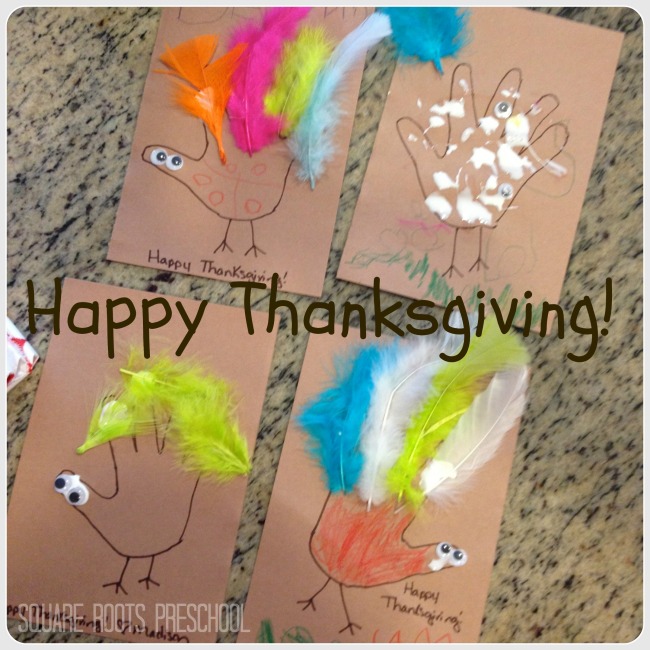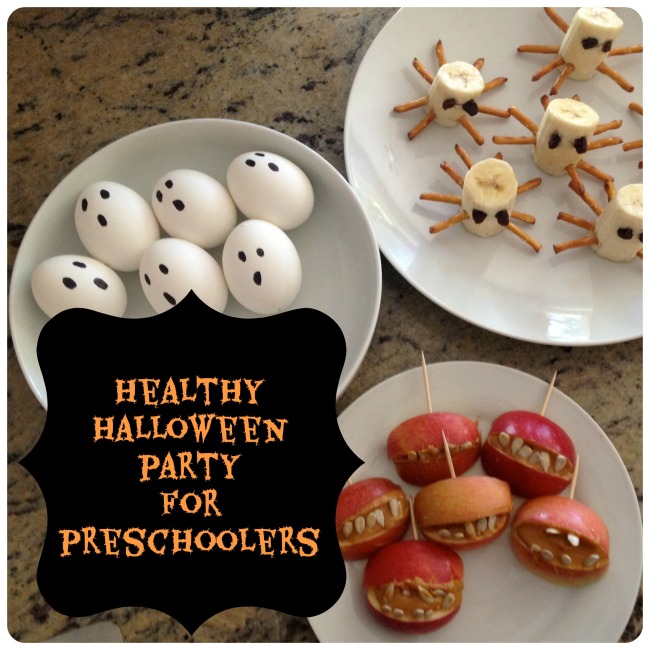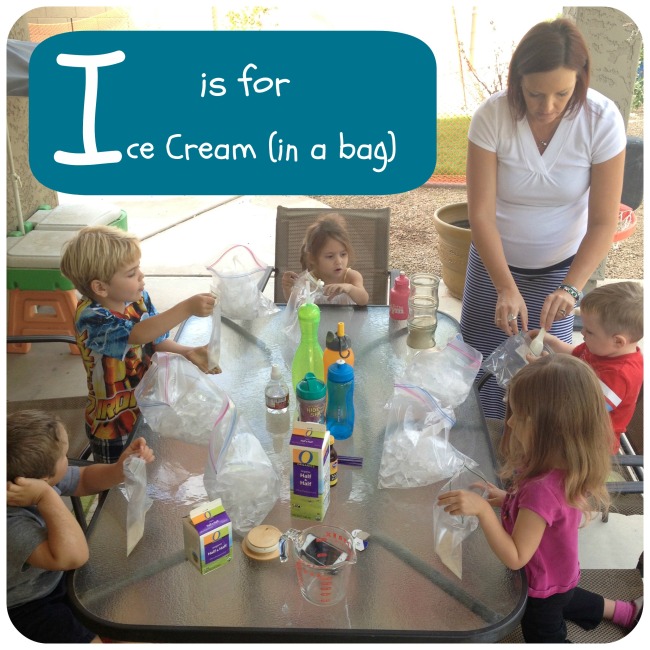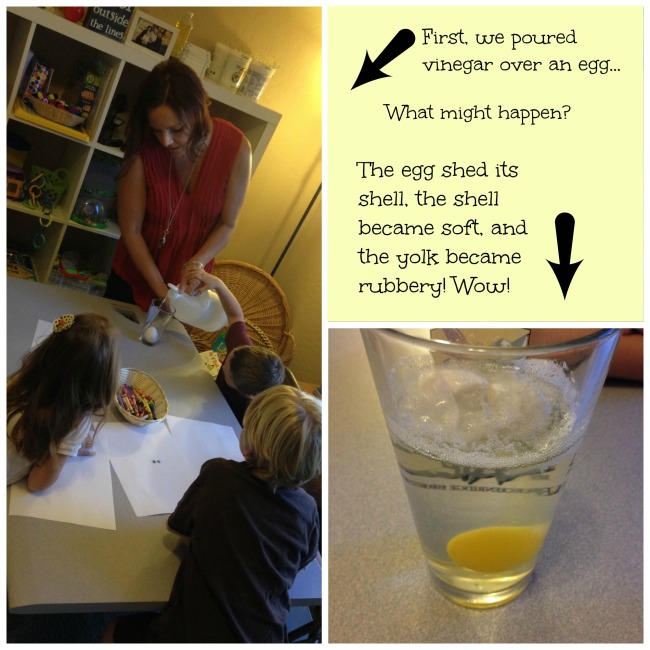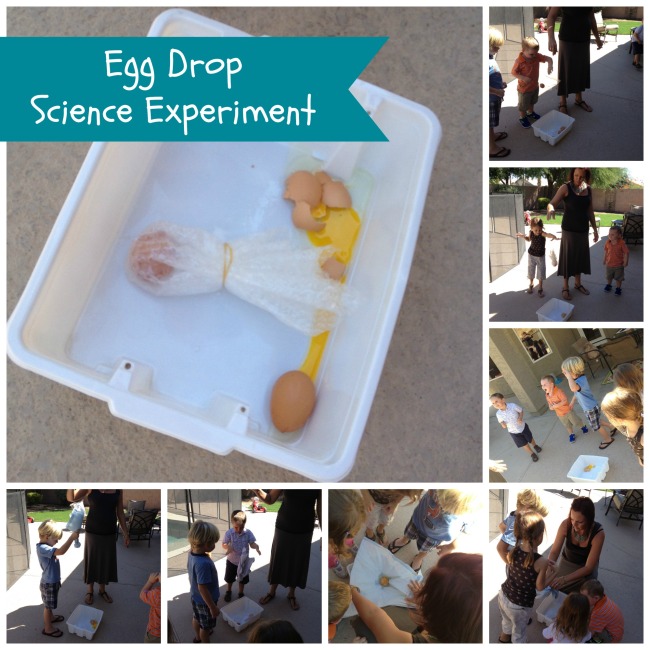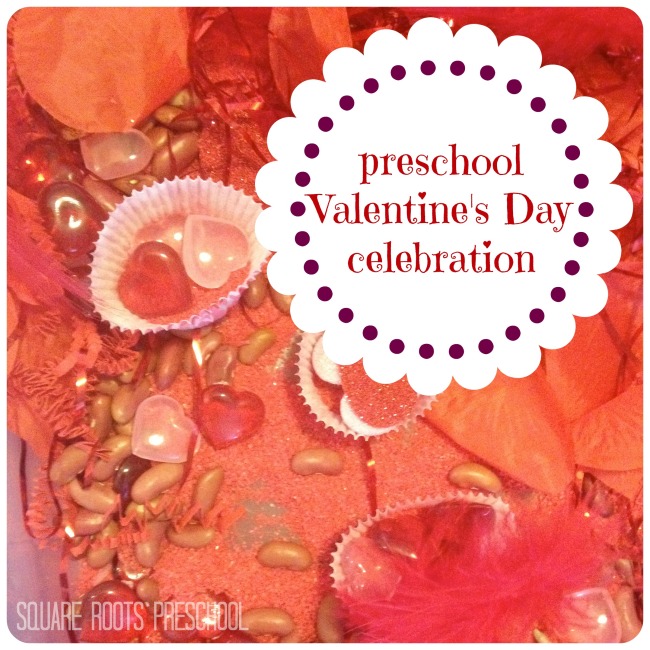 We like to celebrate special holidays and events at Square Roots Preschool, but we don’t want to cast learning aside. This week for Valentine’s Day, we planned a variety of festive activities that kept us on track with our lesson plan. Check out some of the things we did:
We like to celebrate special holidays and events at Square Roots Preschool, but we don’t want to cast learning aside. This week for Valentine’s Day, we planned a variety of festive activities that kept us on track with our lesson plan. Check out some of the things we did:
Our sensory bin held a Valentine’s Day theme. Inside, the students found metallic streamers, heart-shaped jewels, pinto beans, glitter, sparkly foam hearts, folded paper, feathers, and cupcake liners. The students scooped, poured, and picked through the bin, discovering shapes and textures.
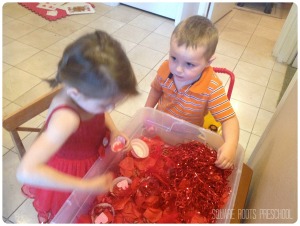
Our sensory bin was full of love.
We reviewed letters Qq, Rr, Ss, and Tt this week, and part of that review was to “trace” those letters, both capital and lower case, in candy conversation hearts. With the promise of receiving a couple of candies to eat if they resisted temptation and focused on the activity, the students (mostly) kept on task.

Letter review.
Our Valentine’s Day projects included heart-shaped name puzzles. Each student received the pieces to his or her name to place in the correct order and glue onto paper.

Heart-shaped name puzzles
The students made Valentine pockets to help collect Valentines from their classmates.

Valentine pockets.
Though we had a fun Valentine’s Day party, we didn’t trade our healthy snack for junk food. We dined on fresh, organic produce in shades of red.

Our healthy snack.
Other activities included matching cards in the suit of hearts, heart writing practice, bubble print hearts, and heart hopscotch. We learned how to say “Quieres ser mi valentin?” during our Spanish lesson, and how to say “I love you” in Sign Language.
Our students had a fabulous time this week learning and celebrating, and we even had time to move and groove to love songs during our Valentine’s Day party. Happy Valentine’s Day from Square Roots Preschool!

